It’s a significant challenge and it's not straight forward, but at Fen Farm, we work tirelessly to make positive, incremental changes in our everyday operations to reduce our environmental impact. Below are some of the key initiatives we’ve put in place.
Is Green Farming Possible?
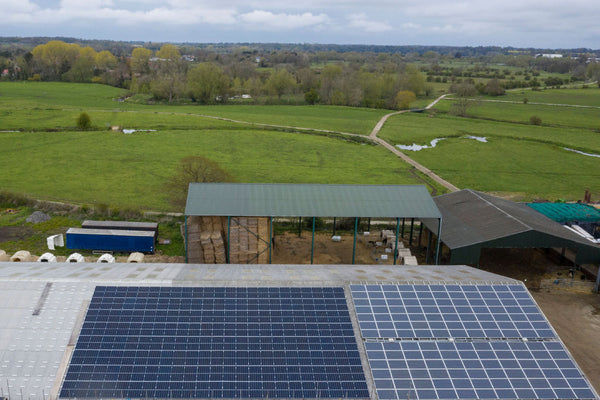
Solar Energy
-
What is it?
276 kw Solar PV panels with battery storage, located on the roofs of our winter cow housing.
Why are we doing it?
This system allows us to renewably produce more electricity than the business consumes throughout the course of the year.
How it works.
During the summer months, our solar panels produce more solar energy than we consume. Any excess energy beyond what is being used by us in the moment of production, is transferred to our battery storage for use during darker hours. Once the batteries are full, all further excess energy is sold to the National Grid. During winter months and dark hours, we may sometimes produce less energy than we consume, in these cases we will buy from the National Grid to cover the deficit. On average throughout the year, we produce more energy through our solar PV system than we consume.
Impact and potential.
Our business consumes a large amount of energy every year. Items such as the milking parlour, multiple refrigeration units and climate-controlled cheese production buildings have a large energy footprint. This system allows us to mitigate, both financially and environmentally, the substantial impact of these operations. It also allows us to contribute additional renewable energy to the National Grid.
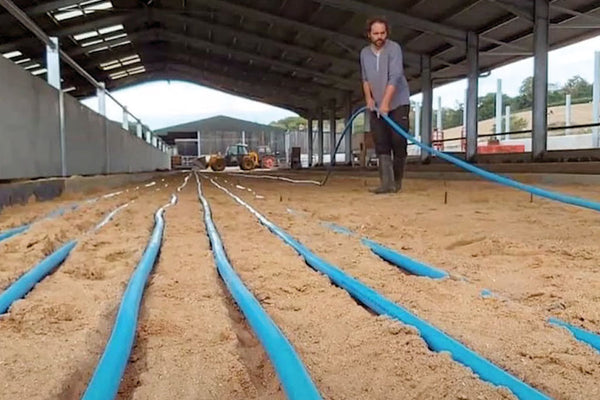
Cow-poo-powered heat exchange system
-
What is it?
Our award-winning innovation. The capture and recycling of natural heat from our cows muck.
Why are we doing it?
The sight of hot steam rising from piles of cow muck around the farm has been intriguing us for years. So much waste heat dissipating into the atmosphere! We have longed to find a way to harness this free energy and recently an opportunity presented itself. See below.
How does it work?
The time came to lay a new concrete floor in the cows winter housing. Our cows are free-range, but during the winter months the grazing land floods and the pasture stops growing, so they live in airy barns on deep straw bedding. When the cows poo, the muck falls into the straw bedding and a process of microbial breakdown begins. This breakdown produces heat, which can be seen in the form of steam rising from the straw bedding. Our long wished-for opportunity had come. Before laying the concrete, we decided to conduct an experiment. We purchased £2,500 worth (2 miles) of water pipe and laid it in zig-zags in a bed of sand, across the area of floor to be concreted. Then we laid our concrete pad over the top and replaced the cows straw bedding above as usual. One end of the pipe was hooked up to receive mains water. The other end was installed to feed the hot water tank used to wash the milking parlour after milking. The experiment was a huge success and now forms an integral part of our sustainability drive. The heat from the microbial breakdown in the straw bedding warms the cold mains water to around 40˚C as it passes through the pipe. This warm water drops into our hot water tank where it is topped up to 90 ˚C by the hot water created from our waste heat capture system (described below).
Impact and potential.
The system was cheap to install (around £2,500). As it eliminated the need to “buy” new energy to heat the water, it paid for itself within 6 months and continues to provide us with free hot water throughout the winter months several years later!
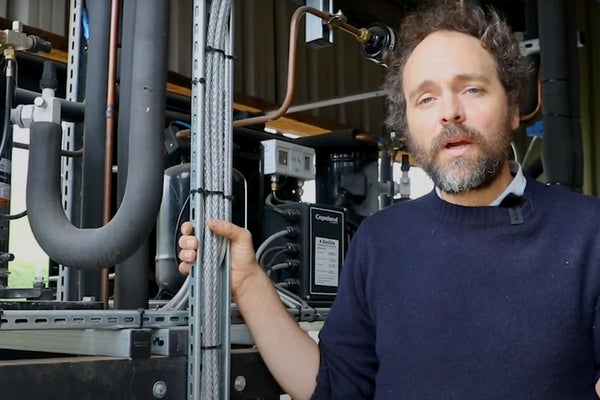
Waste heat capture
-
What is it?
The capture and re-deployment of the “waste” heat produced by on-farm activities.
Why are we doing it?
Walk around any dairy farm or cheesemaking facility and you will see/feel waste heat everywhere. In most businesses, this heat dissipates into the atmosphere un-used, while the business is simultaneously using planetary resources (and money) to create the heat they need in other areas. We see this as a great resource just going to waste, so we have taken steps to capture it.
How it works.
Many items of equipment produce heat as a by-product of use. These items include plate-coolers for milk, air conditioning and refrigeration units. Here at Fen Farm, seeing all this “free” heat go to waste was really bugging us. In partnership with our refrigeration contractor, we have identified major areas of waste heat production on our farm and designed systems to capture and redirect this heat to help with energy-intensive processes such as creating hot water for washing equipment. The heat captured during this process is used to help “top up” the temperature of the warm water coming in from our cow-poo-powered heat exchange system, described in the section above.
Impact and potential.
Waste heat capture and recycling allows us to reduce the amount of “new” energy needed to power on-farm processes.
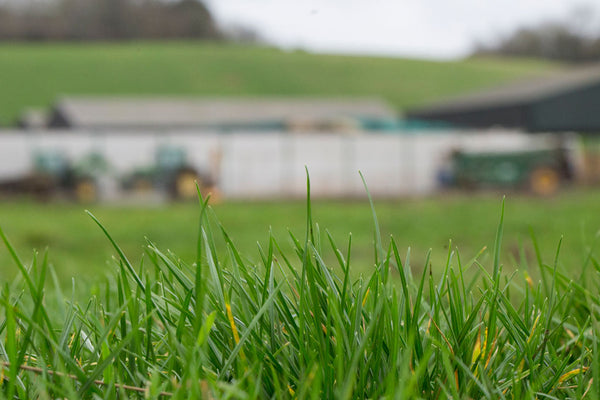
Biomass energy
-
What is it?
The slow combustion of renewable locally sourced straw to provide energy to heat water.
Why are we doing it?
With our cheese sales growing at an average of 30% a year over the past 10 years, our hot water usage has also increased. We need hot water for cleaning dairy and food production areas, heating milk and to supply our offices and on-farm employee housing. The cost and environmental impact of using electricity for heating water was becoming very unattractive.
How does it work?
Our farm is located within a geographical area of intensive arable farming. This allows for a ready supply of straw bales from our neighbouring arable farmers. The installation of a biomass straw burner was the ideal opportunity to take advantage of the renewable resources around us, whilst keeping fuel transport emissions to a minimum. Our straw burner uses only one bale per day and supplies our business with ample hot water for all our needs, throughout the year.

Hydrolysing Technology
-
What is it?
Hydrogen fuel systems to reduce vehicle emissions.
Why are we doing it?
Emissions from tractors and other on-farm vehicles form a major part of the environmental footprint of any modern farm. We cannot hope to zero our footprint without addressing this key issue.
How does it work?
We have retro-fitted hydrolysers to our tractors and telehandlers. These small, shoe-box sized devices change the conditions within the combustion engine, to increase fuel efficiency and reduce emissions.
Impact and potential.
A retro-fitted hydrolyser can reduce vehicle emissions by an average of 80% and reduce fuel consumption by an average of 20%.
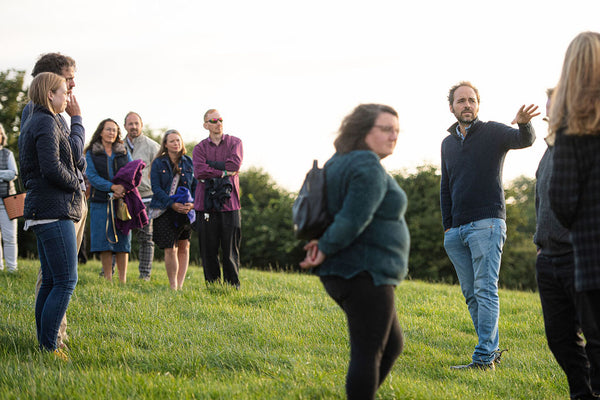
Public Education
-
We believe that public education is the key to stemming the tide of misinformation when it comes to food and farming. It is our mission to open the doors of our farm (virtually) to a wide audience across the globe, to bust myths and help consumers understand how a sustainable dairy farm can work.
We do this via a number of channels:
Youtube: https://www.youtube.com/@fenfarmdairy8629
Instagram: @fenfarmdairy
Facebook: /fenfarmdairy
Theads: @fenfarmdairy
TikTok: @fenfarmdairy
Website and blog: fenfarmdairy.co.uk
Email: (((Button Text: Join our Mailing List)))))
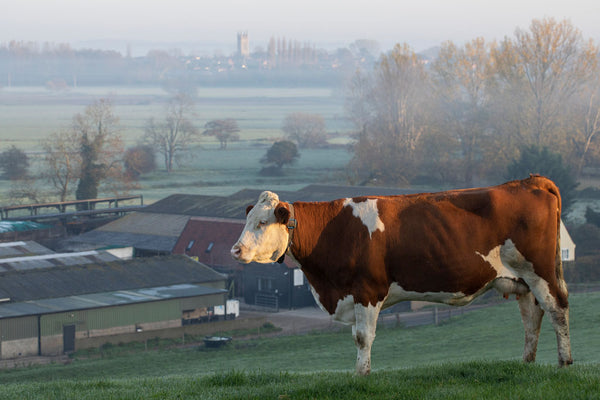
Circular Farming System
-
What is it?
We truly believe that dairy and meat production and consumption can be good for the planet and is actually a part of the solution when done right. Here at Fen Farm, we have a name for this. It’s called circular farming. The concept is very simple. We put back what we take. We respect and nurture our ecosystem. We try not to do crazy things like importing animal feeds from across the globe.
Why are we doing it?
We believe that the closer we can bring food production to “the way nature intended”, the kinder it is on the planet and the better it is for people and animals. We’re not perfect yet, but we’re working on it relentlessly.
How does it work?
We view our entire farm as a symbiotic lifecycle. The cows graze the pasture to gain vital nutrients. The presence of the cows, their muck, their stomping hooves, their browsing activities, nurtures and shapes the plant life, insects, wildlife and ecosystems within the pasture. Through this, the soils are nurtured, providing conditions for better pasture growth, deeper roots and more prolific wildlife. The better grazing and browsing opportunities positively impact the health of the cows, who produce better, more nutrient dense milk and meat. Animals, humans and planet all benefit. When our cows come indoors during the coldest months, we collect their muck and straw bedding, compost it and spread it back onto the land to continue the life cycle of soil improvement. During the winter, when the pasture is dormant and prone to flooding, we feed our cows on a home-grown diet. We try to grow all our winter feed during the growing season on our own arable land, immediately surrounding our farm. This is a mixture of herbal ley, grass and whole crop silage. In this way, we can be self-sufficient and have full control over the quality of our cows winter feed. In doing so, we drastically reduce the need to import feed from across the globe.
Impact and potential.
The circular farming system vastly reduces the environmental footprint of a dairy or beef farm, by eliminating or greatly reducing the need for imported feed or the feeding of grains. This system nurtures the whole lifecycle of the farm and surrounding ecosystem. Since switching to our circular farming system, the health of our herd has increased manifold, with greatly reduced herd sickness and visibly energised and healthy animals. The dairy and meat produced under low intensity pasture fed systems has been proven to be better for human health than that produced under intensive farming systems. The herbal leys and grasses we grow for winter feed can occupy a field for several years in a
row, greatly reducing the need for ploughing and soil disturbance. This allows healthy root structures and mycorrhizal communities to become established, contributing to improved soil health, reduced runoff and greater carbon storage potential. A major benefit of this system has been improved climate resilience, with the deeper rooted grasses and herbs able to withstand flooding and temperature extremes, where modern ryegrass could not. We have also noticed a reappearance of many naturally occurring plant species within the pasture, adding to the diversity of the ecosystem. Our summer grazing pastures are permanent, allowing for rich and long established biodiversity and carbon sequestration, as well as being a safe haven for wildlife. The increased soil health as a result of circular farming has allowed us to make around a 75% reduction in nitrogen fertiliser use by planting more clover and herbal leys.
